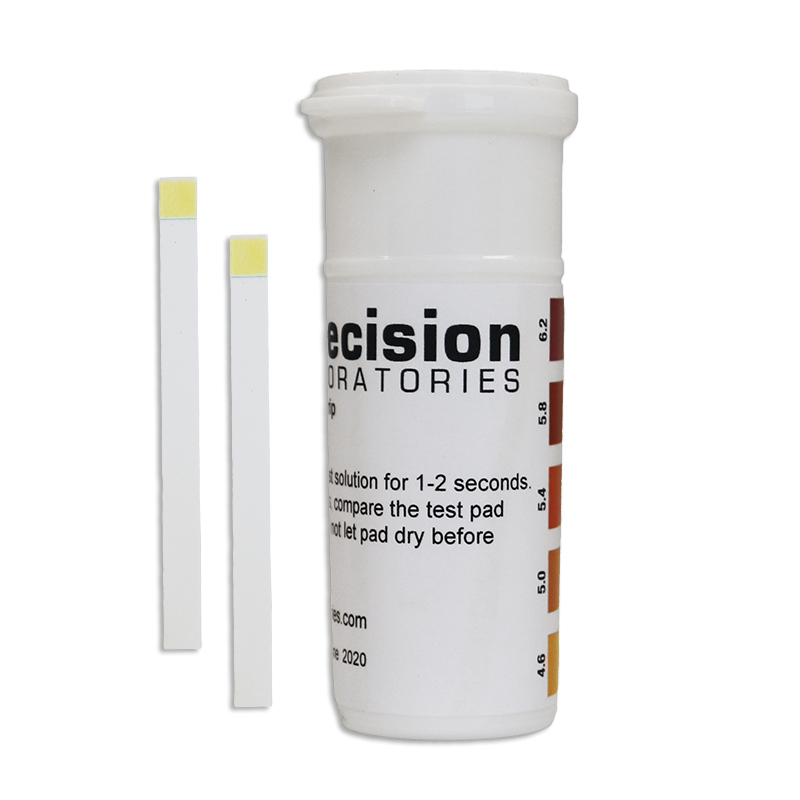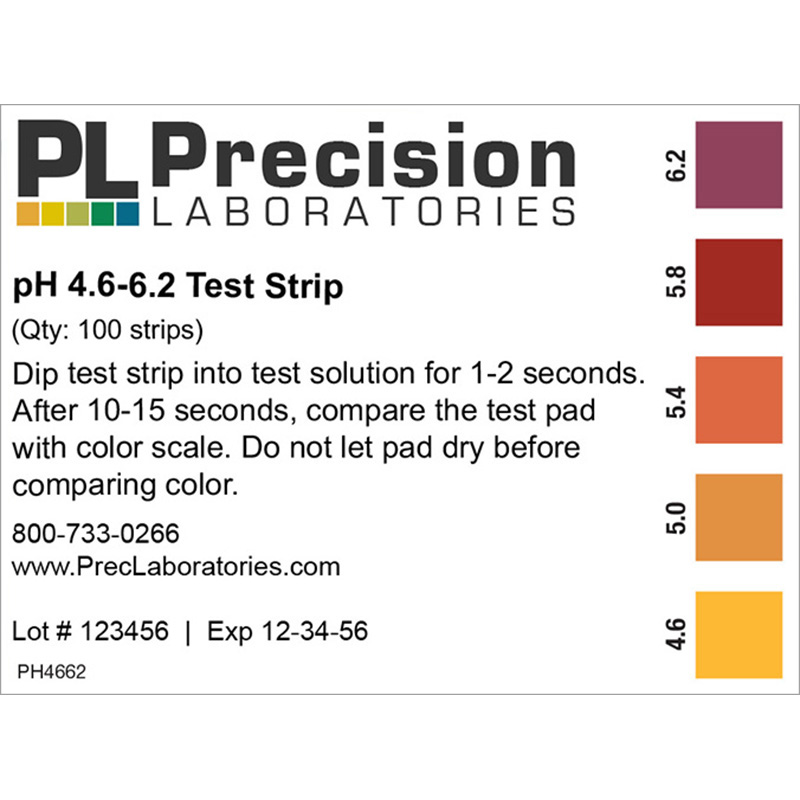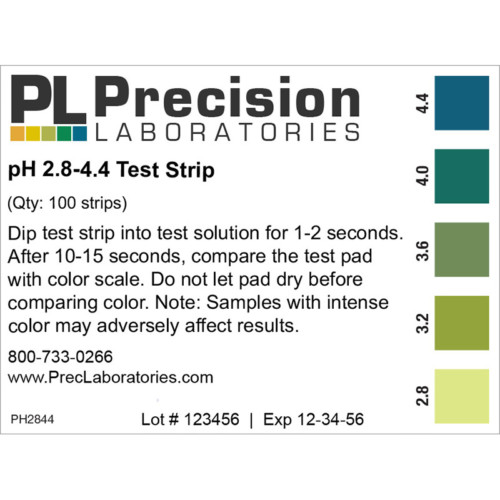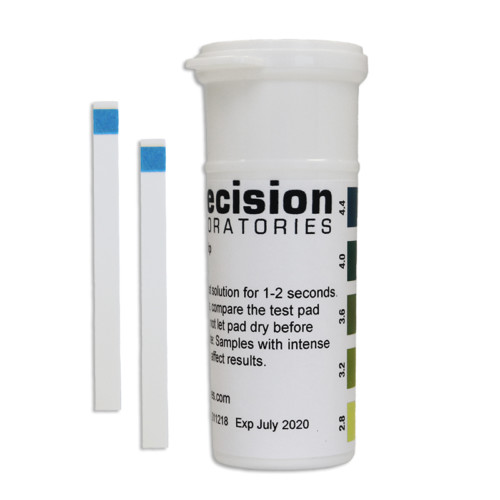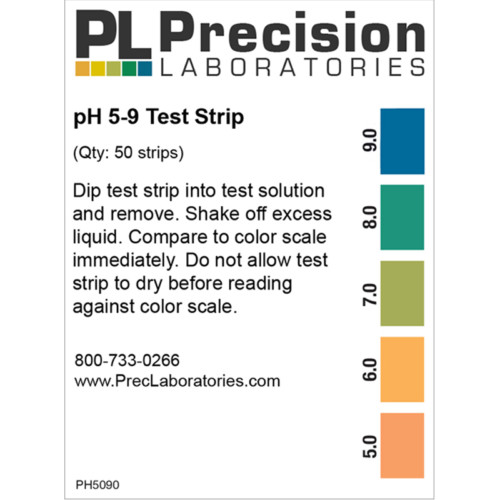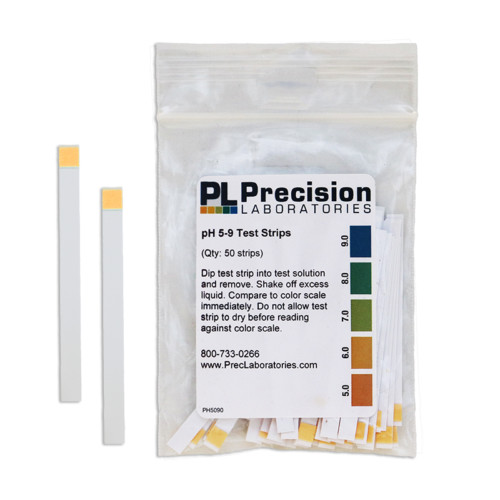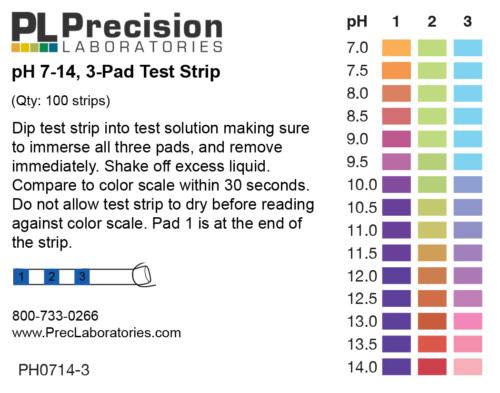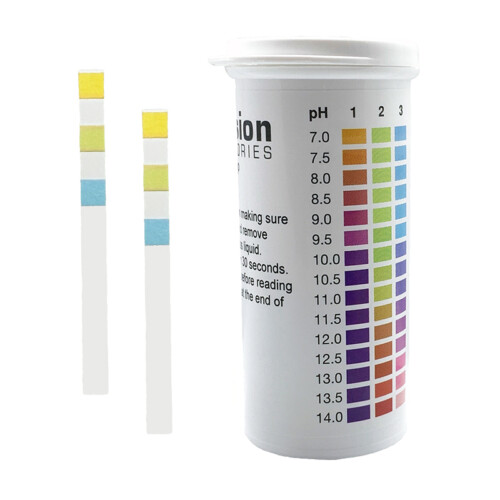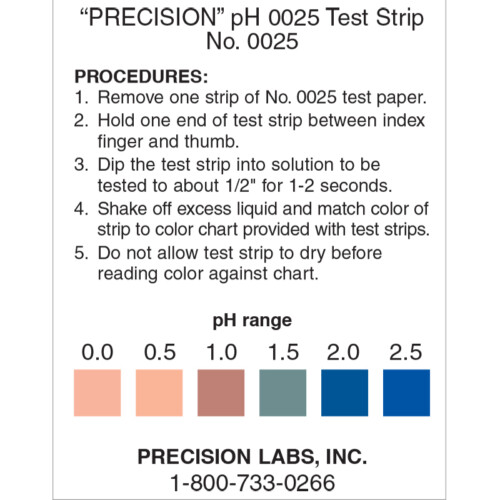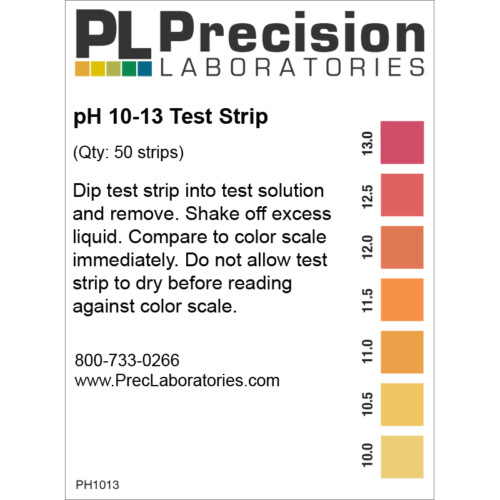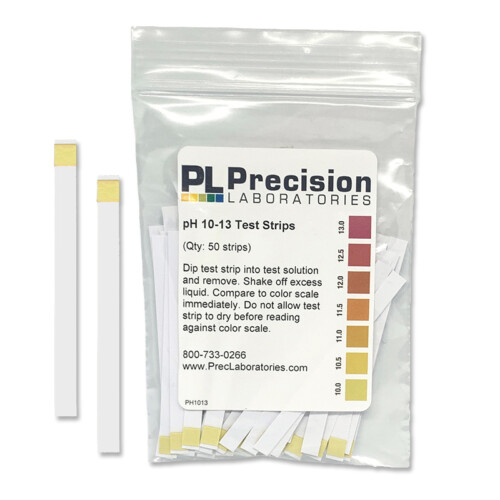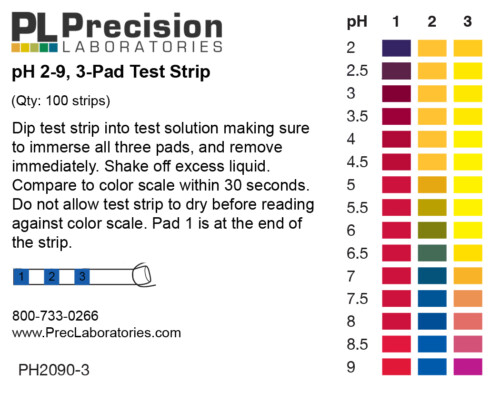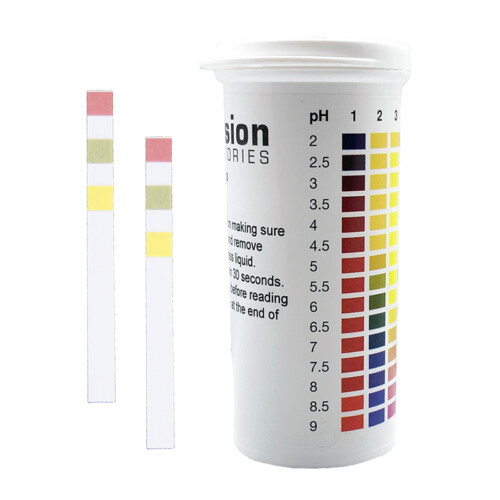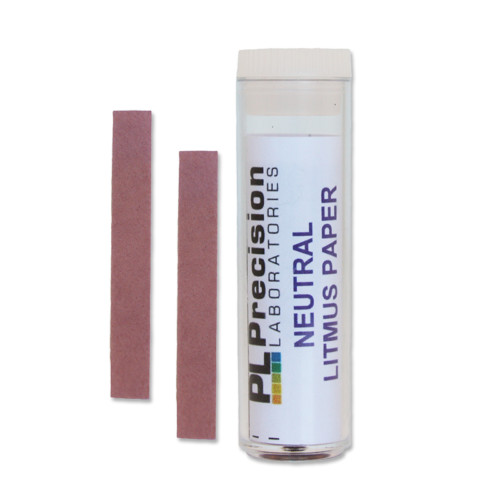The narrow-range Beer pH test strip, pH 4.6-6.2, is used for testing beer mash. The pH of Yeast is best at 5.2-5.5.
Beer pH Test Strip 4.6-6.2
Beer pH Test Strip 4.6-6.2
- Remove one Beer pH test strip from the vial.
- Dip the test pad into the solution being tested for 1-2 seconds.
- Remove the strip, and compare against the color chart within 10-15 seconds. Do not let the pad dry before reading against the color chart.

Disclaimer: Precision Laboratories products are not approved for use as medical devices. Products and product information is for informational purposes only and not intended for use to diagnose, treat, cure or prevent any medical condition. Consult a medical doctor when needed.
KS4662; KS4662/100; KS4662/50; PH4662; PH4662-1V-100
Product Specs
| SKU 1: | PH4662-1V-100 |
|---|---|
| Strip Quantity: | 100 strips |
| Vial Dimensions: | 1.375″ (D) x 3.25″ (H) [35mm (D) x 83mm (H)] |
| Strip Dimensions: | 2.5" (L) x .1875" (W) [64mm (L) x 5mm (W)] |
| Weight: | 0.05 lbs [25.7 g] (100-strip vial) |
| Shelf-Life: | 2 Years |
| Label: | Customizable water-resistant label |
Product Documentation
SDS
Does temperature affect the pH test strips?
Our pH Color charts were developed using NIST-traceable pH buffers at 25°C. Colorimetric pH test strips do not offer “temperature compensation.” Care should be used when comparing results using test strips to those obtained with a temperature compensated pH meter. It is well established that the “true pH” of a solution will be influenced by temperature. The extent of the effect is specific to the solution being tested. It is good practice to record the temperature of the solution when expressing results of pH testing. In the case of test strips, since they do not compensate for temperature, it is recommended that the sample being tested be brought to room temperature first.
Why don't my pH 4.6-6.2 test strips work?
1) The pads on the strips are yellow when they are made. If they are not yellow then they have been exposed to heat, humidity, light, or some other detrimental condition.
2) The test strips will change color outside the pH range shown on the color chart. The strips will turn purple in alkaline waters. There is a way to check this. Concentrated bleach will turn the strips purple and then yellow and then white as the paper bleaches out. Dilute bleach will turn the strips purple and then eventually a greenish color if they sit out for a few minutes. In acids, there isn’t as much change. When testing vinegar (dilute acetic acid) they should remain yellow. I have tried the strips using both concentrated and dilute acetic acid – both were yellow. You might try adding a little vinegar or bleach to small samples of the water to confirm that the strips react as expected.
3) Temperature has a slight effect on the test results. It seems that raising the temperature from 25C to 70C causes the color to shift about ½ a color unit higher.
4) When testing RO, distilled, or tap water, the strips might not behave as one might expect. The indicators used with the strips require that the waters being tested have some buffering capacity. RO and distilled waters have little or no buffering capacity and the strips will not work in these waters. If the tap water has a very low buffer capacity (low hardness, low alkalinity, etc.) the color can take much longer than the recommended 1-2 second immersion and 10-15 development time. We ran a test to find results on various buffer solutions with the color transitioning from yellow to purple from pH 4-7 in 0.5 unit increments. These particular buffers did not develop very intense colors in the pH 5-6 region. The shades were close but the intensity was not as intense as the color chart. We would expect that the mash has sufficient buffer capacity.
Since the color of the strip remained yellow, that would seem to indicate that the pH was lower than 4.5. If this is not what you would expect we would suggest two things:
1) Try the bleach test described above in item (2) to make sure the strips are reacting like they should. If they do not turn purple, then it is possible that the strips are old.
2) Try a fresh vial of strips.
What test strips should I use to measure mash and wort pH?
Monitoring the pH of the Mash, Wort, and Beer is necessary as the Yeast will develop differing physiological states, and the presence or absence of Organic Acids and the use of mineral Ions during the fermentation process will cause changes in acidity or alkalinity. This in turn affects Enzyme activity in the Yeast.
Prior to, and during the process of fermentation, a measure of the pH of the solution is quite important. The correct pH must be established initially, and should be monitored throughout the process in order to facilitate the complete breakdown of the initial carbohydrates to alcohol. This measure of pH may be accomplished with the Universal pH test paper. In addition, the pH 1-14 test strips can be used to test the acidity (pH) of the juice/must/beer prior to and during the process of fermentation. For an initial measure of the pH of the mash for beer, a narrow range measure can be obtained using the pH 4.6-6.2 test strips.
The pH of Yeast is best at 5.2-5.5. Malted Barley will release Phosphate Ions, and these will cause the water to be buffered at a pH of 5.6. Attaining an optimum pH range will ensure more complete conversion of starches in grain to fermentable sugars. In addition proper hop utilization will occur.
Can I use pH test strips in non-buffered or low-buffered aqueous solutions?
Currently, our pH test strips are designed for testing buffered solutions, and the calibrations (color charts) are made on buffers against a pH-meter measurement. For non- or low-buffered solutions, these strips are not suitable. For this purpose, there are special pH test pads designed for low-ionic and low-buffered waters, such as water in aquariums or pools. Please see our Aquarium and Pool test strips.


